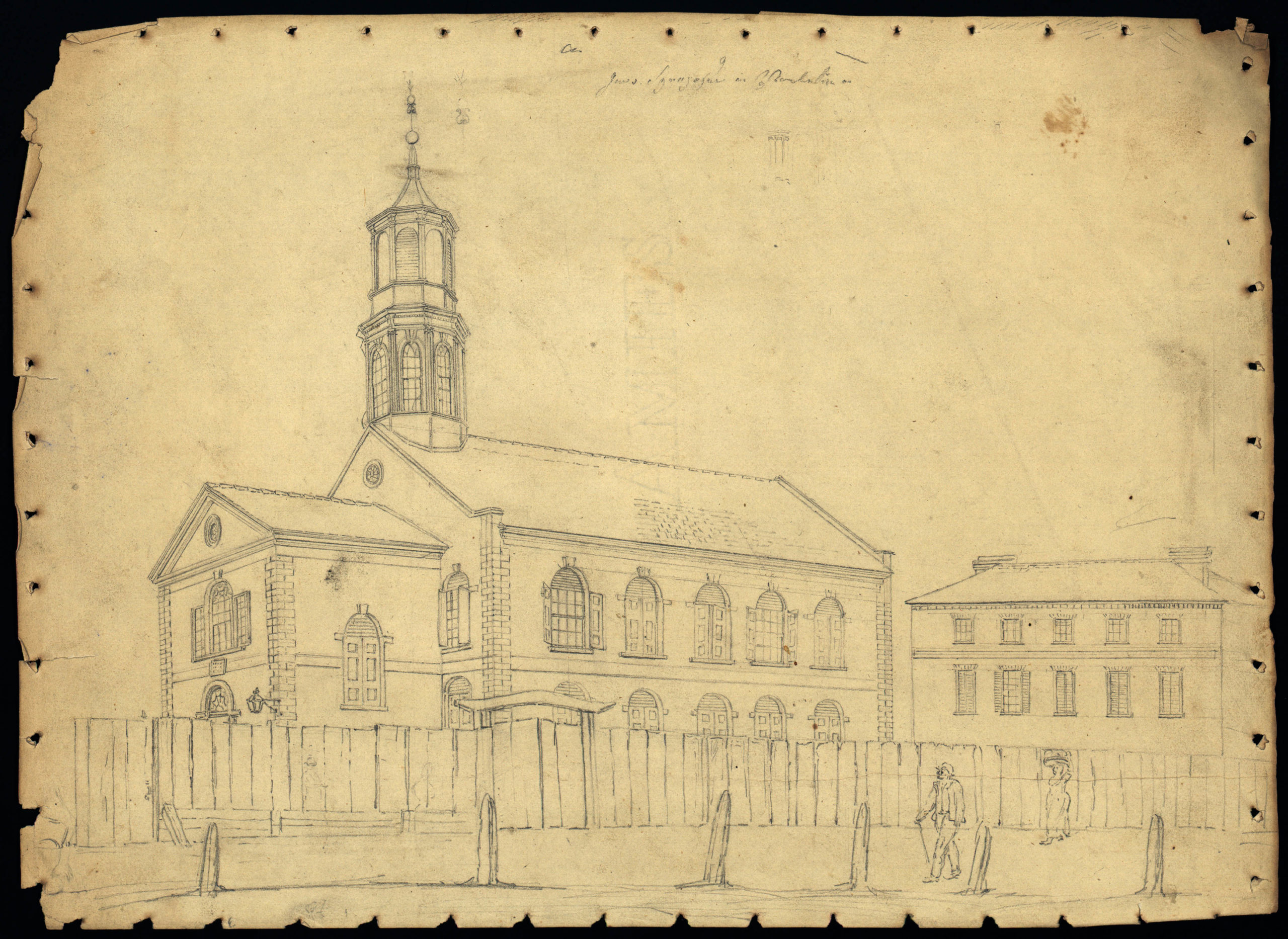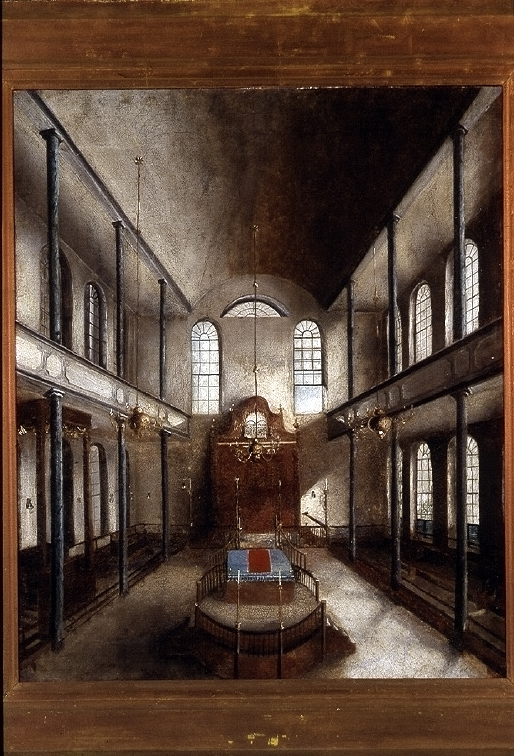Kahal Kadosh Beth Elohim
First synagogue built in Charleston
Having worshipped for almost a half century in rented spaces, the congregation Kahal Kadosh Beth Elohim, founded in 1749, built its first synagogue here, close to a building it had previously leased. Land purchases began in 1791, and cornerstones laid on Friday, September 14, 1792. The building was consecrated on September 19, 1794, with Governor William Moultrie and other officials and dignitaries in attendance.
The sanctuary may have resembled a church on the exterior, with a steeple-like cupola over the west-facing entrance, but the interior was very much in line with Jewish design and custom. The layout followed what architectural historians call a Sephardic floor plan or, more formally, an open central aisle plan. Women sat in balconies, with staircases in the projecting entryway that held the steeple. The ark was at the eastern end, under a large fanlight, letting in natural light to bathe the marble plaque of the Ten Commandments. Reflecting symbolic numerology, evenly spaced along both sides of the sanctuary were five compass-headed windows, representative of the first five books of the Bible—the Torah or Pentateuch.
Bancas, or benches, for men were arranged along the north and south walls, facing inward; in the middle of the north wall was a raised banca for high officials of the congregation. Lit by candelabras, three brass chandeliers, and sconces on the walls, the sanctuary diverged from the typical Sephardic plan in one important way: the rounded bimah, or tebah, the reader’s desk, reached by a few steps, was placed closer to the center of the sanctuary than usual for a Sephardic synagogue—a spatial compromise, perhaps, between KKBE’s founding Sephardic families and the now more numerous Ashkenazim.
In April 1838, the synagogue, along with nearly every other structure in the neighborhood, was lost in a fireLate in the evening of Friday, April 27, 1838, a fire began near the corner of Beresford (today’s Fulton) Street and King Street. It was driven by wind from the southwest to East Bay Street and beyond, destroying more than 1,100 structures—dwellings, tenements, boarding houses, stores, workshops, kitchens, stables and sheds, and four houses of worship, including Synagogue Kahal Kadosh Beth Elohim, a fixture of the city skyline since its completion in 1794. Nearly 70 of the 560 homes and businesses that burned were owned or rented by Jews. that destroyed much of the center of Charleston in a wide path across the city from King Street to the Cooper River. Our only image of the interior comes from a painting made immediately after the disaster by twenty-three-year-old Solomon Nunes Carvalho (1815–1897), who in September 1838 offered the canvas to the trustees “for such compensation as the Board may deem proper to allow.” (They paid him $50.) Carvalho also produced a lithograph of the synagogue’s exterior, which provides a view of the building from the street. (There is also a drawing from 1812, made by John Rubens Smith (1775–1849), of the temple’s exterior.) All that survives from the original structure are four cornerstones discovered in 1951 when the foundation of the present temple was repaired, the marble plaque above the entrance to the sanctuary, bases of the candlesticks on the current bimah, and the wrought iron fence along Hasell Street, constructed in 1819.

Kahal Kadosh Beth Elohim, exterior, 1794
Drawing by John Rubens Smith (1775–1849), ca. 1812. Library of Congress, Prints & Photographs Division, reproduction number LC-DIG-ppmsca-05439.
Kahal Kadosh Beth Elohim, interior, 1794
Painted from memory by Solomon N. Carvalho (1815–1897) in 1838, shortly after it was destroyed by fire. Kahal Kadosh Beth Elohim.